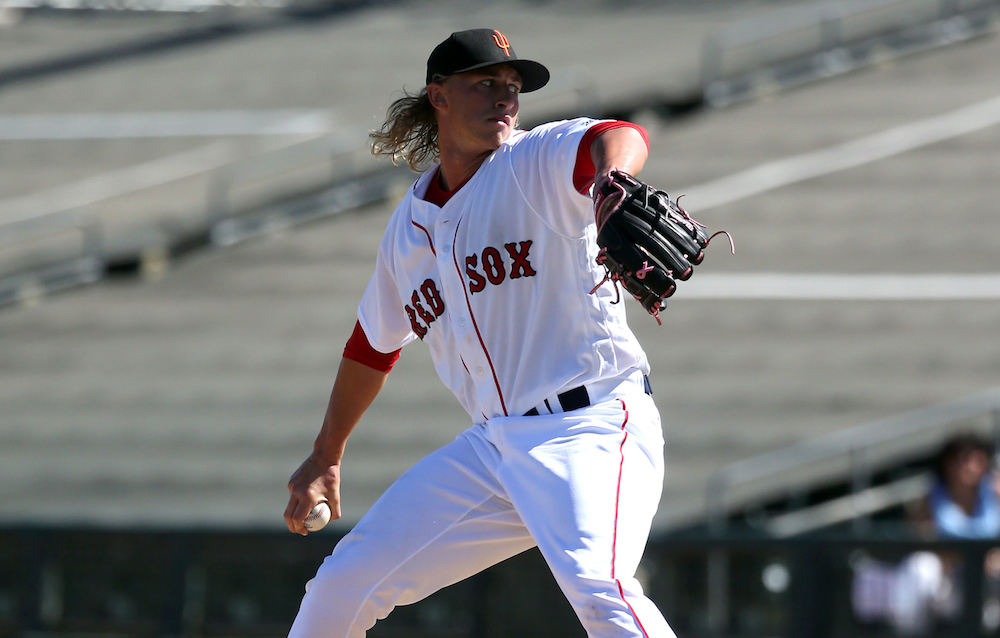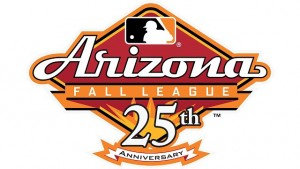Feature Photo: Michael Kopech, RHP, Red Sox
2016 AFL Surprise Saguaros
Dave DeFreitas and Mark Shreve continue to go though their AFL notes, and offer up their views on six prospects this week, as we move into our second week of AFL coverage with 2080’s AFL Prospect Spotlight newsletter. Be sure to also check out some new reports from DeFreitas in our updated Report Library, and have some fun perusing Alec Dopp’s updated Prospect Video Library, which is pushing 50 new videos from just the first ten days of action.
2080 Prospect Spotlights – Arizona Fall League
 Thyago Vieira, RHRP, Mariners (Peoria Javelinas, Arizona Fall League)
Thyago Vieira, RHRP, Mariners (Peoria Javelinas, Arizona Fall League)
Ht/Wt: 6’2”/210 B/T: R/R Age: 23 yrs, 3m
After finding his stride and dominating Cal League hitters out of the pen in 2016, the Brazilian native is now very much on the Mariners’ radar, and he’s currently here in Arizona being tested against slightly more concentrated competition. Vieira has a thick muscular frame and has some effort and funk in the delivery. He keeps the front side closed for a long time before coming right over the top with his max-effort arm action. Even with his big velocity, he doesn’t have a real quick arm – but he gets great angle and with his long arms, and it seems as though he is reaching out and placing the ball in the catcher’s mitt. He typically sits in the high 90s with the fastball (and was up to 99 mph earlier this summer in Bakersfield during a series vs. Lancaster), but he sat 98-to-101 mph last week in his AFL debut, vs. the Mesa Solar Sox. He doesn’t have big movement on the pitch, but does have some late hop and really has it get heavy when he is locating down in the zone. In addition to the fastball, Vieira’s curveball is a hammer, with the ingredients to be plus, and with 11-to-5 snap. He has not been consistent with the pitch in the past, but this year seems to have figured out that he does not need to be perfect with it, and is now throwing it rather than aiming it.
Leading up to this season, Thyago’s main enemy was his inability to throw strikes with any kind of consistency, erasing any advantage his power stuff provided. He put up 6.39 K/9 and 5.81 BB/9 rates in his second year in the Midwest League in 2015, and the ratios were not much better in 2014 with 10.02 K/9 and 6.10 BB/9. However, 2016 saw him focus on really driving the ball to the bottom of the zone and worrying less about giving up contact. This resulted in his groundball rate going from 0.80, 0.74 and 0.97 in 2013-15 to 1.63 in 2016. The adjustment here I believe led to increased confidence working in the zone which ultimately resulted in 3.65 BB/9, 10.76 K/9 and less than a hit per inning over 44 ⅓ innings pitched. Vieira will start the 2017 at 23 years old, and with his 80-grade fastball and future 60-grade curveball in his arsenal, if he can even get to 40-grade command with the fastball, he should be able to replicate this recent success as he climbs the ladder and reach his ceiling of a Role 50 setup reliever. If Viera turns in a solid AFL performance, I expect him to be in big league camp in March, and start 2017 in Double-A. Check out my full report here. – Dave DeFreitas
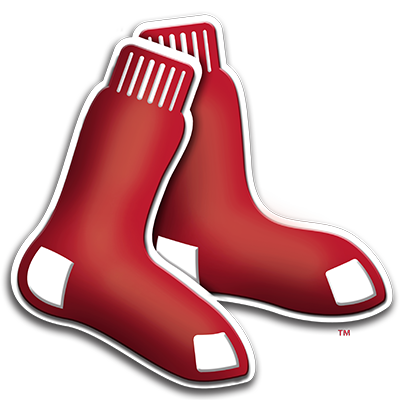 Michael Kopech, RHP, Red Sox (Surprise Saguaros, Arizona Fall League)
Michael Kopech, RHP, Red Sox (Surprise Saguaros, Arizona Fall League)
Ht/Wt: 6’3” / 205 B/T: R/R Age: 20 yrs, 5m
Kopech came into the Fall League as one of the fresher young arms, having not thrown a competitive pitch until June 17 after fracturing his hand in early March, and then missing a week in July with a calf strain which combined to limit his season to just 11 starts and 52 innings at High A Carolina. His results for the year were a story of binary outcomes, with a late season surge of three consecutive starts where he threw 18 innings and punched out 32 while walking just four, and finishing the year with back-to-back starts of 0.2 and 2.1 innings, where he gave up six hits and seven walks combined.
His first AFL start on October 15 showed he’s got some gas left in the tank this year, as the big righty threw up three hitless frames, striking out five, and challenging hitters with great command of his fastball, sitting 97-to-99 mph (T100) and exploding in the zone with some slight arm-side movement. He pounded the zone to all quadrants, but with particularly sharp command to the glove side. Establishing the fastball to the outside corner to RHH played up a slider that had plus action at 85-to-88 mph, which he showed that he could vary the break on for a strike-throwing version with tilt and sharp bite, and dial-up some strike-to-ball sweep for swing and miss and put-away. The FB/SL combo, in this view, was dominant, with the hardest hit ball being a routine fly to left-center field. He also threw two changeups that flashed some late bottom in the 88-to-89 mph range that replicated the fastball arm speed of out of hand, though it was underutilized (and not needed) in this view thanks to the overpowering FB/SL combination. Overall he threw 40 pitches, 32 for strikes, with half of those balls being of the nibbling fastballs and hard slider-types to try to get some chase.
While his mechanics are high effort affair, they were repeated consistently in this look. He’s got a high leg lift and medium arm circle, showing the ball in the back, with strong drive off the rubber and a fast arm speed that comes violently through his 3/4s slot. His momentum carries his right foot over to the first base side when he follows through. He’s got the athleticism to make those moving parts work in sync at that tempo, and one evaluator I spoke with said those mechanics were actually smoothed out when compared to viewings shortly after the All-Star break, which is probably the best explanation for why his fastball sits in a more comfortable range – albeit still big velo – with better command presently. It also shows he is listening to his coaches, and making the necessary adjustments to get better, which is critical for any 20-year-old prospect. But what stands out to me most about Kopech is his developing build – he is clearly playing above his listed weight of 205 pounds. He looks much closer to 225, and his baggy uniform hides a large frame and sculpted upper body with broad shoulders, muscled arms and a strong lower half.
At just 20 years old, there is still plenty of risk in the profile, but there’s a lot to dream on with this kid’s raw stuff. This viewing certainly backs up the Red Sox’ excitement about his future potential, which I see as a solid Role 60, #3 starter who could reach a Role 70 ceiling if the command comes around to be at least average. It’s easy to forget that Kopech as has yet to pitch a full season of pro ball, and he’s totaled just 135 innings as a pro, but the ingredients are there, and durability, consistent mechanics, and improved control, especially of the fastball, are the benchmarks from here to throttle up his development. – Mark Shreve
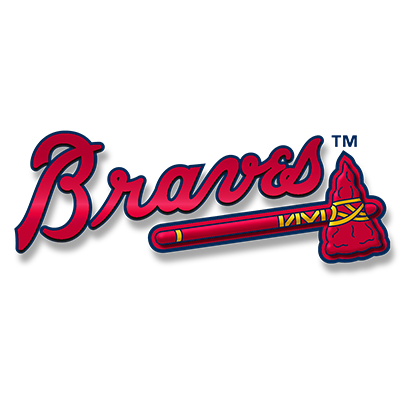 Travis Demeritte, 2B, Braves (Salt River Rafters, Arizona Fall League)
Travis Demeritte, 2B, Braves (Salt River Rafters, Arizona Fall League)
Ht/Wt: 6’0” / 180 B/T: R/R Age: 22 yrs, 0m
Demeritte flashed a standout glove in the AFL during the first week of play for the Rafters, hitting my punch list of athletic, ranging plays in the first two games I viewed him. He went deep in the hole to his glove side and up the middle and coming up firing with accuracy; jump-throwing a strike to first base for an out, and coming in on a softly hit ball and throwing an off-balance strike to beat the runner in a bang-bang play. So he quickly checked the boxes for me as the owner of an above-average glove and plus arm strength.
On the other side of the ball, his bat showed some promise with hard contact and barrel control, though pitch recognition and some swing mechanics seem to be playing into his high regular season strikeout rates (175, or 33% of his PAs in 2016). He showed the ability to handle offspeed well, and the three hits he had in my two looks were all off sliders in the 85-to-86 mph range, including a home run to left field off of Mariners’ top prospect Luis Gohara (LHP, Peoria Javelinas). He also showed good barrel control reaching for a put-away slider in the game prior, and lining it to right field. He did not look comfortable against velo, however. There’s some length to the swing, starting from a high hand position and dropping his hands in a c-shaped path to get the barrel into the zone, and a mild leg lift timing mech that leads to a varied stride to the ball beginning from a mildly open stance. He was inconsistently planting with the front foot remaining open, and at other times planting into a slightly closed hitting position – which could indicate some level of guess-hitting on his part, and contributing to his recurrent swing-and-miss issues. He showed the ability react to the offspeed thanks to his quick hands and barrel control, but the swing adjustments get to be more of a challenge as the velo dials up.
But when he’s on, he’s on, as his 28 home runs and .915 OPS at the High A level this year can attest to. With the high-caliber talent assembled in the AFL, Demeritte is getting a good test of his approach, pitch recognition skills, and plate discipline against more advanced pitching. The Rangers’ 2013 first-rounder was already deemed expendable by the Rangers, who dealt him to Atlanta July 27 (for RHP Lucas Harrell and minor league LHP Dario Alvarez), and is still just 22 years old, so he should feel like he has something to prove after a rough start to his brief pro career (that’s also included an 80-game, PED-related suspension in 2015), so starting fresh with a new coaching staff and a chip on his shoulder should be a re-boot to help him reach his potential. He ‘s got a good idea of the zone (67 walks this year), and he’s shown plus athleticism overall, so I would expect the adjustments to be made over time to cut the strikeouts down, to create a more efficient, direct path to the ball, and to generate more consistent hard contact. When paired with the glove, the profile should make for a Role 40 floor, Role 50 future ceiling at second base. – Mark Shreve
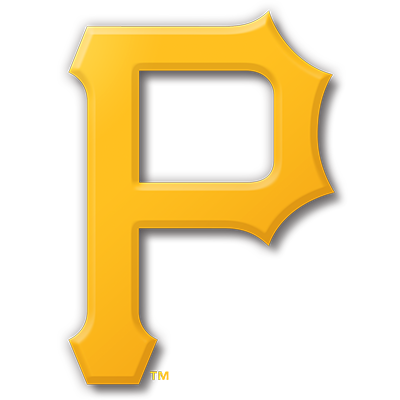 Eric Wood, 3B/LF, Pirates (Surprise Saguaros, Arizona Fall League)
Eric Wood, 3B/LF, Pirates (Surprise Saguaros, Arizona Fall League)
Ht/Wt: 6’2” / 195 B/T: R/R Age: 23 yrs, 10m
After seeing Wood a few times playing third base for Double-A Altoona in the Eastern League, I did a double-take seeing him firmly planted as the starting left fielder for the Saguaros in the AFL. These are the first reps of his professional career at the position, but because of his above-average defense at third base and strong arm, there’s not much to read into the position change at this point, other than knowing that the Pirates added Connor Joe (3B, High A Bradenton, Florida State League) to the Surprise roster on 9/16, and the club already has Yoan Moncada (3B, Red Sox) taking reps at the position, and the move is to simply ensure he gets his ABs to keep developing his hit tool.
So, with the position change (Note: ‘changes’ – he’s had one start at third, three in left, and got his first pro start at first base last night), the bat is the real story of Wood’s development this year, and it’s where he’s made the most progress, with a big jump in his power numbers and better plate discipline. During the regular season, Wood led Eastern League third sackers in home runs with 16 (in 402 ABs) after hitting just two (over 334 ABs) in 2015, and added 25 XBH vs. 14 in 2015. He also worked deeper into counts, with a 52:88 BB:K rate this year. While the19% K-rate has been consistent in his last three seasons, the walk rate is trending in the right direction.
Out in Arizona, his swing did not feature much pre-swing movement, with a square stance and hands high at the ear hole and brought down into a quiet load, showing above-average bat speed with some loft through the zone, and a predominantly two-handed finish. A small leg lift timing mech is present and he has some travel in the hips that lengthens his swing some, which could make him more susceptible to off-speed stuff, but in these views he showed good barrel control and was able to cover the plate well. So while he’s yet to record an XBH, he is an impressive 9-for-21 in his first five games (.429), with two walks and six K’s.
The AFL is a small development snapshot when compared to his excellent 2016 campaign. Wood has shown enough power and above-average defense this year to get back to big league camp next spring with a bounce in his step; his new-found super-utility role in the AFL may just be to keep the bat in the lineup, but he has shown the instincts, speed, and arm to handle left field in my looks, and it will be interesting to see if they pursue a two-position strategy into 2017 to accelerate his advancement through the higher levels. He’ll probably start the year at Triple-A Indianapolis, and if he continues to improve the hit tool at the level, he could possibly see some action as a late-season call up. If the Pirates front office liked the profile after a light-hitting, two home run campaign in 2015, they’ll certainly be happy with the player they have now. He looks to be capable of becoming a Role 50 third baseman sooner rather than later. – Mark Shreve
 Alex Verdugo, CF, Dodgers (Scottsdale Scorpions, Arizona Fall League)
Alex Verdugo, CF, Dodgers (Scottsdale Scorpions, Arizona Fall League)
Ht/Wt: 6’0”/205 B/T: L/L Age: 20 yrs, 5mo
The Dodgers’ outfield log jam has been well covered the past several years and as we roll into the offseason, 2017 promises to be more of the same. As it stands now, the outfield looks be some mix of Joc Pederson, Trace Thompson, Andrew Toles, Yasiel Puig, Andre Ethier and Howie Kendrick. A name we should probably add to that list is Alex Verdugo. While I don’t expect him to impact the big league roster right away in 2017, there could be a point next summer, where he works his way into their plans.
In Verdugo, the Dodgers have an athletic outfielder who, while he can handle center field, is likely to end up on the corner where he profiles as an above-average defender. He takes good routes and reads the ball well off the bat, so I expect those abilities to translate fine with a move to the corner. On the offensive side Verdugo does have some pop, but it plays more as doubles/gap power potential. Where he shines is in his advanced approach at the plate, and in his feel for the barrel. In his first look at Double-A pitching, Verdugo got 529 PAs and posted a 12.7 K-rate while walking 44 times and hitting 23 doubles. He did only slug .743, but for a kid that didn’t turn 20 years old until May, it shows a solid approach, and an ability to make fairly consistent hard contact. The body doesn’t suggest that he will get a whole lot bigger, but there is some baby fat on his frame, and I expect that he will continue to get stronger. The 13 jacks he hit in Tulsa this year were four more than he hit in 540 PAs across two Class A levels, so the strength is developing. Couple that with the fact that he has adjusted to every level he’s been promoted to, and it is a good indication that the trend will continue. So far in Arizona, he has shown good ABs, even with some early struggles, and that includes a good ABs vs. left-handed pitching. He has a feel for the strike zone and maintains good balance throughout his stroke, and while Double-A surely isn’t the big leagues, he was not overmatched. His power numbers fall off a bit vs. lefties (only a .691 OPS in 2016), but he did hit seven doubles and two HR’s while still showing good plate discipline in 106 ABs.
Overall, it looks like the Dodgers have another athletic, well-rounded player with instincts who will contribute sooner rather than later. He does not seem at all intimidated being young for each level he’s been at, and I don’t expect that trend to change when he arrives in Los Angeles. While I don’t think that they are the same player, the energy and style of play remind me a bit of Pederson, just with a little less juice and a slightly better of a hit tool. Here’s my full report on Verdugo. -Dave DeFreitas
 Willie Calhoun, 2B, Dodgers (Scottsdale Scorpions, Arizona Fall League)
Willie Calhoun, 2B, Dodgers (Scottsdale Scorpions, Arizona Fall League)
Ht/Wt: 5’8”/187 B/T: L/R Age: 21 yrs, 11mo
When you first look at Calhoun, the unassuming height and lack of the typical ‘projectable’ frame can fool you. However, what he lacks in stature he more than makes up for in strength and bat speed. Calhoun isn’t going to be the most athletic player on the field by any stretch, but he has a sweet left-handed stroke and generates tremendous bat speed, giving him above-average raw power and the ability to drive the ball out to all fields. He has a small hitch in his load, but he’s very strong through his wrists and forearms enabling him to buggy-whip the barrel through the zone. While he has some uphill plane to the swing, he keeps the barrel in the zone for a long time and gets great barrel exit which allows him to create big backspin carry on his line drives and fly balls. In his short professional career, he has been mostly a pull hitter, but at 21 years old he is young enough, and athletic enough with the stroke, to where he should be able to adjust and utilize his power to the middle of the field more as he develops.
In 2016 he showed excellent feel for the strike zone, only striking out 11% of the time over 560 PAs in his first look at Double-A pitching for the Tulsa Drillers. That is something that jumps out at me, especially when you look at his trends in 2015 where he walked 35 times and only struck out 38 times across three levels – not only does that show strike zone command, but when also looking at his extra-base hit numbers it shows some ability to get to pitches in multiple quadrants while still doing damage. He put up and OPS of .863 between the Pioneer League, the Midwest League and the Cal League in 2015 and followed that up with an .844 mark in Tulsa. The caveat here–those numbers were his damage vs. right-handed pitching. Versus lefties it is a much different story, where he only managed a .575 OPS in 105 ABs in 2016, and he struck out at a 21% clip, more than double his 10% K-rate vs. righties. So while there is above-average power potential there and he’s got advanced plate discipline for his age, he is obviously not nearly as comfortable vs. lefties.
Defensively, Calhoun does not offer a ton of upside. His hands, range and arm strength are all fringe average or below, and while he was surprisingly quick on a double play turn in the last game I saw, I don’t expect him to stay at second base too much longer – especially after 21 errors this past year. So all that said, it looks like the Dodgers have a bat with some potential, but a player with no firm defensive position on their hands. He could conceivably make a move to left field, but first base may be more likely. As I said before, he is young enough with a very athletic swing so I do think he will improve some vs. lefties – however I ultimately see him settling into a Role 4, platoon-player scenario. Some of you may recall Randall Simon, who came up with the Pirates in 1997 and bounced around the league for nine seasons. Simon had significant value in his prime in just that type of role, so something along those lines is what Dodger fans should expect going forward with Calhoun. -Dave DeFreitas

